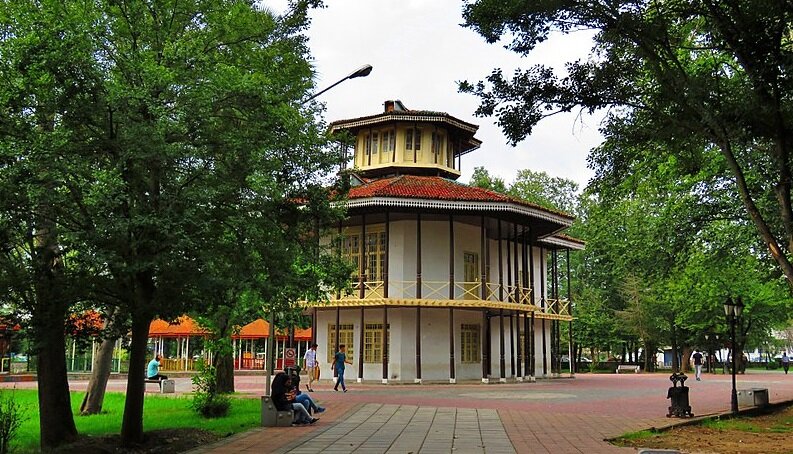Travel destinations: Kolah-Farangi mansion

Kolah-Farangi mansion is one of the most gorgeous tourist attractions in Rasht. The structure is located on the southern side of Mohtasham Garden (also known as the City Park).
The history of Mohtasham Garden dates back to the Qajar era (1789–1925), particularly to the time when Nasser al-din Shah Qajar ruled Iran. Akbar khan Biglarbegi, who was one of the rulers of Gilan, started the construction of this garden and when he passed away, his daughter inherited it. She married her cousin, Sadegh Khan Mohtasham al-Molk, and therefore, the garden was called Mohtasham Garden.
A unique feature of this building is that it looks like a three-story building from the outside but it has four stories. There are two rooms on both the first and the second floor.
On the upper floor, there is a large octagonal room that has windows on every side. During different seasons of the year, these windows provided lightning and good ventilation. This building was used as the summer residence for the rulers of Rasht, and then in the reign of Reza Shah Pahlavi, it was changed to the City Park and was opened for public use. Nowadays it is being used as the center of preservation and instruction of the local arts of Gilan province.
The construction materials of Kolah-Farangi mansion are brick and wood, and its roof is made of clay. All around the building on the first floor is a porch and on the second floor is a wooden balcony.
The delicate decorations of the mansion such as wooden lion heads, carved columns, and beautiful balcony railings have made this structure an attractive and unique monument.
Sophisticated Rasht, capital of Gilan province, has long been a weekend escape for residents of Tehran who are looking to sample the famous local cuisine and hoping for some pluvial action – it's the largest, and wettest town in the northern region. Gilan is divided into a coastal plain including the large delta of Sefid Rud and adjacent parts of the Alborz mountain range.
Bounded by the Caspian Sea and the Republic of Azerbaijan on the north, Gilan, in the far past, was within the sphere of influence of the successive Achaemenid, Seleucid, Parthian, and Sassanid empires that ruled Iran until the 7th century CE.
AFM
Leave a Comment